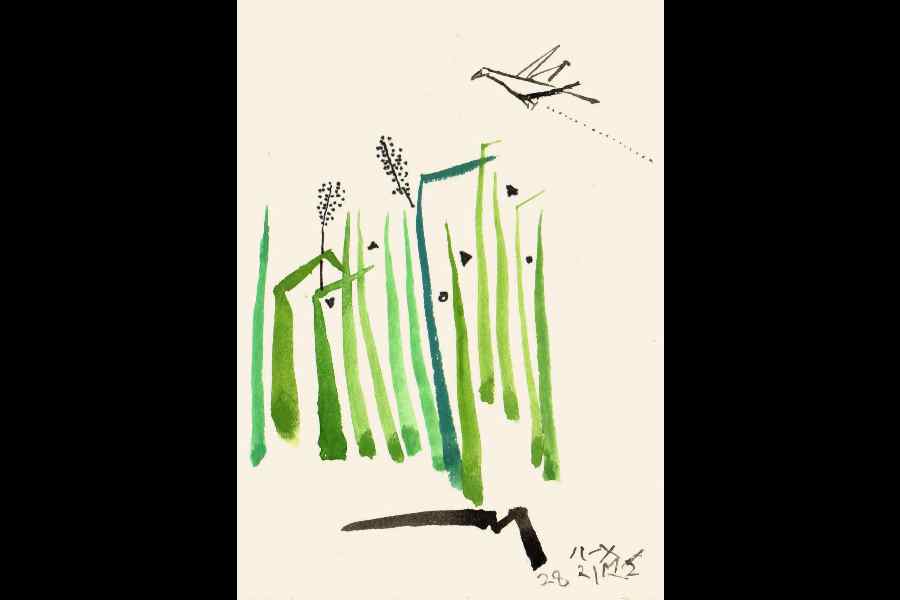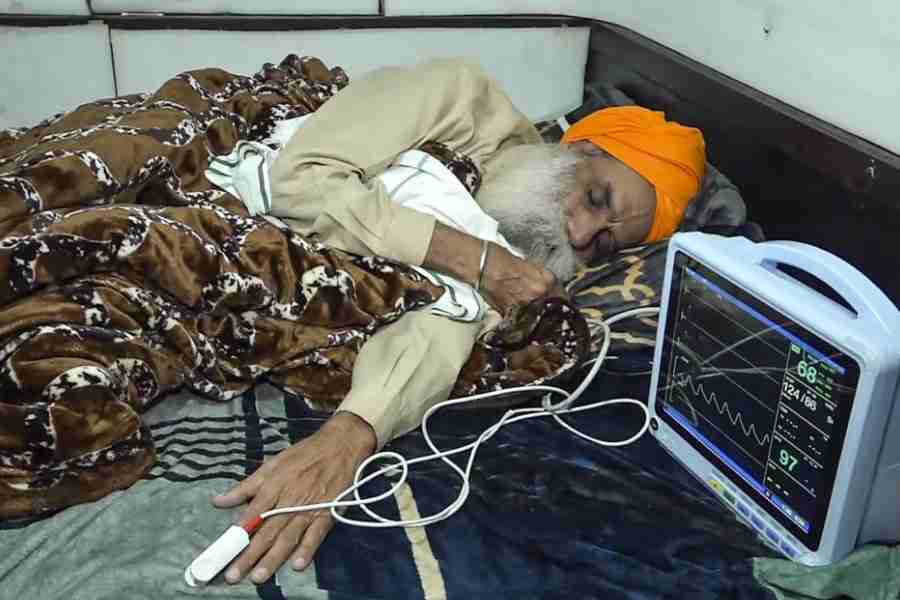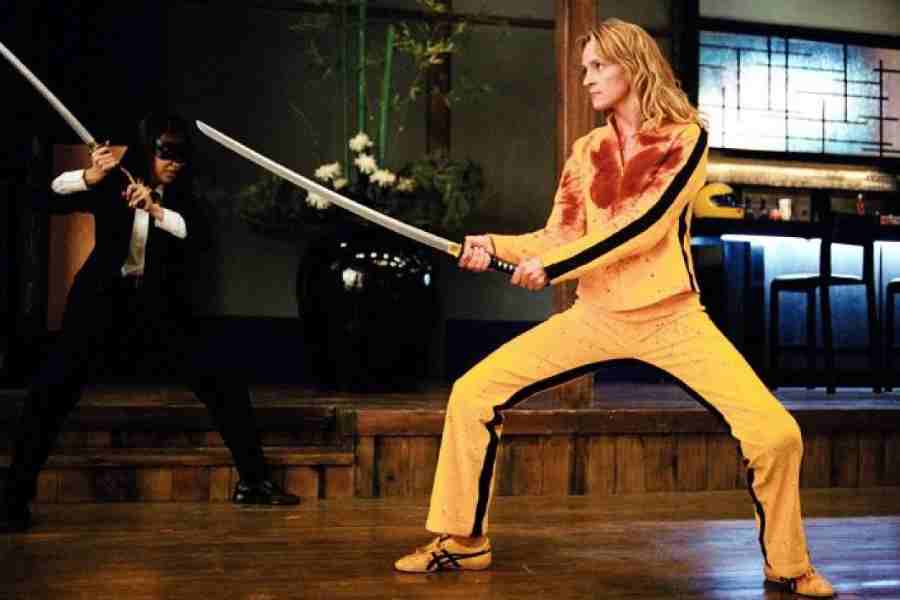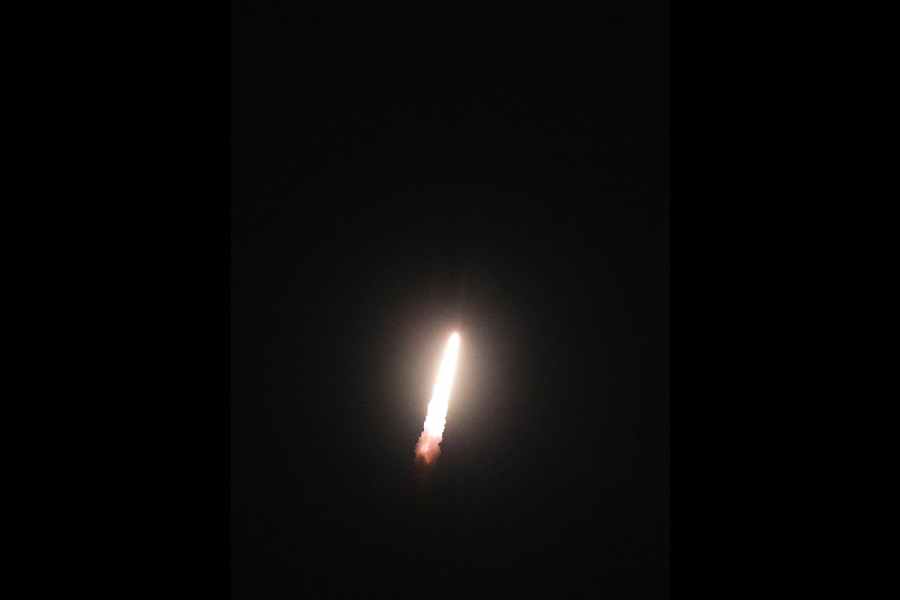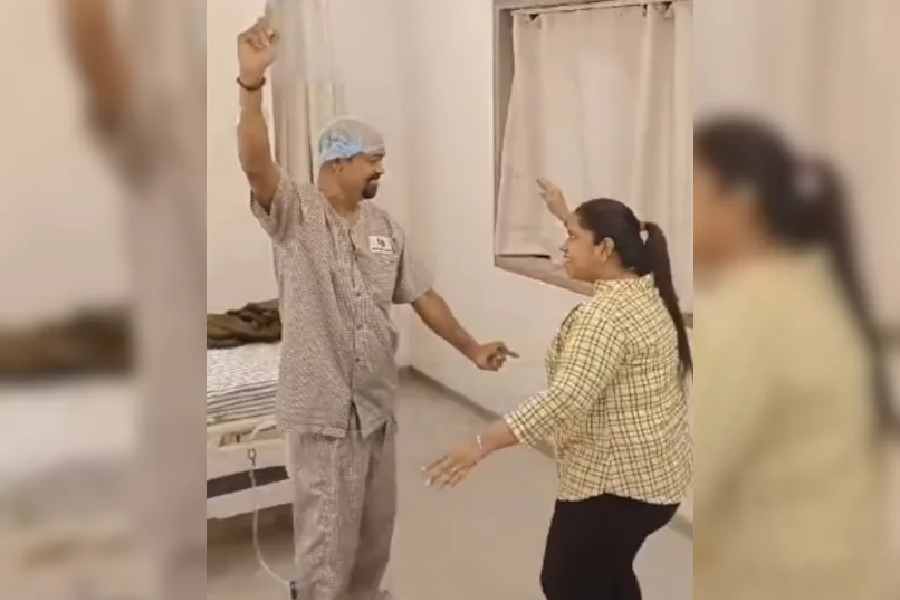Two exhibitions, To/From at Debovasha and Re-citations: rhymes about land, water and sky at the Birla Academy of Art & Culture, together underscored six decades of painting and afforded viewers an insight into the creativity of the 88-year-old artist, Ganesh Haloi. The latter was organised jointly by the Kiran Nadar Museum of Art and the Birla Academy of Art & Culture with Akar Prakar as an outreach partner in Calcutta. Roobina Karode was its guest curator. Although the title did not indicate it, Haloi’s beautiful copies of the Ajanta wall paintings and some other figurative work done early in his career as an artist were displayed for the first time in a section of the second exhibition.
Debovasha showcased 52 small-format gouache paintings of uniform size. It is amazing how productive Haloi is at his age. All the works bore the hallmarks of Haloi, albeit in shorthand. The artist seems to have been in a playful mood as he painted a tiny bird flitting over a field of grass (picture, right), aqueous plants and their reflections, riverine land and paddy fields reduced to simple and often geometric forms and their various configurations that have rhythms of their own. These spaces exist in the artist’s imagination and are similar in their brilliance and colour to the changing patterns inside a kaleidoscope.
As in his larger works, these were poetic recollections of his home at Jamalpur in Bangladesh with its paddy fields and vast network of waterways. In his larger works exhibited at the Birla Academy of Art & Culture, the artist amplified and elaborated on these themes and compositions. However, the colours were darker and more sombre, deepening the mystery of nature that inspired them.

Maulviji by Ganesh Haloi Birla Academy of Art and Culture/Kiran Nadar Museum of Art
Haloi and his family had left their home in 1952 and sought refuge at Howrah station. In spite of his dire poverty, he went to the Government College of Art and Craft. Occasionally, he worked as a labourer to pay for his upkeep and fees. After passing out in the 1950s, he was employed by the Archaeological Survey of India to copy the Ajanta wall paintings. Some of his exquisite copies were exhibited at the Birla Academy of Art & Culture. Compositional structure being his forte, Haloi copied with effortless ease the various Jataka tales about the Buddha. Fading and fragmented though these paintings are, Haloi’s copies of entire scenes in warm earth tones or in line drawings bring alive languid human forms in various dramatic compositions that have gained iconic status. In their disintegrated state, they look like vague recollections of dreams.
Haloi had also painted the inhabitants of the villages around the Ajanta caves, such as the dignified figure of the maulvi dressed in black (picture, left). At that time, the influence of Bengal School was quite strong on his work. Besides this, he also painted the delicate portrait of a young bride and some publicity material in vertical frames. Dipankara Buddha on his way to Tibet carrying a Bodhi tree sapling, Srikrishna Chaitanya, and charming vignettes of rural Bengal are depicted in these frames. Done in the 1960s with paint brushes, the rarefied figure drawings on paper are brittle and fragile with age.
Along with his paintings, the layout of a fresco Haloi had planned and other projects were displayed too. The exhibition deserved to be on for a longer period of time.

